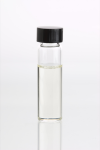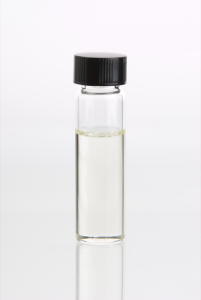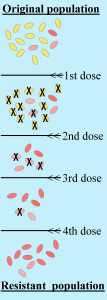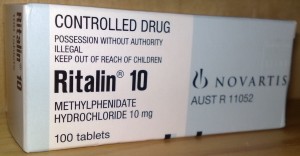Nourishing the Terrain
When we think of nourishment, we naturally reflect on nutrition…the food necessary to establish a healthy terrain. After decades of propaganda leading us to believe that commercially produced “foods” are OK, we are coming to a rude awakening that we have deviated far from the natural, whole foods that truly nourish our bodies. Because this critical awareness is not upheld by all supporting systems in our society (agricultural, educational, economical, political, medical), only proactive individuals are making this difficult transition. We must be vigilant in selecting the foods we eat, how they are grown, how they are prepared and their consequent ability to nourish our cells. We know the importance of organically grown vegetables and fruits. Finding the best sources and preparations for our families may not be as convenient as we would like, but is certainly worth the extra effort. Our Nutrition section in this issue offers a few important suggestions to incorporate nutrient-dense foods and eliminate those that overload us. Included are family-tested recipes that improve the terrain and enhance immune system function.
Coordinating the Function
The classic medical text Gray’s Anatomy tells us that the nervous system is the master control system of the body, determining the function of all systems, all functions and all organs. Newer to science is the profound interconnectivity between the nervous system and immune system. Once thought of as separate, these systems are now considered intertwined. It is now widely accepted that a healthy immune system supports nervous system function, and vice versa. This is very important for us to recognize if we want to create a healthy terrain.
The nervous and immune systems are interconnected in several known ways. Adrenal glands are one common link. Chemicals and hormones that are produced by cells of both systems are another connection. Additionally, research shows that the brain uses nerve cells to communicate directly with the immune system.
Chiropractic care was first linked to improved immunity during the deadly flu epidemic of 1917 and 1918, when chiropractic patients fared better than the general population. This observation spurred a study of the field. The data reported that flu victims under chiropractic care had an estimated .25 percent death rate, considerably less than the normal rate of 5 percent among flu victims who received no chiropractic care.
In 1936, pioneering endocrinologist Hans Selye began groundbreaking research on the effects of stress on our health. B.J. Palmer tells us:
Selye’s great contribution to science was this clear concept, that disease affects people according to their previously developed ability to adapt. The writer goes on to relate that the physician prefers to hear that you have had childhood diseases rather than avoided them. He knows that a bout of harmless chickenpox while you were a child, will probably immunize you for life, but that if you contract it first as an adult, it could run a very serious course. This is somewhat of a reversal to medical thinking in years past. This may seem strange, but the writer has this to say regarding antibiotics. “All too often, a patient will insist on a shot of glamorous penicillin or some newer antibiotic for a mild infection. The physician will explain that the drug is not necessary—that it is better for the body to use its own defenses—but the determined patient shops around until he finds someone who will administer it anyhow.” “The frequent result is that, although the individual’s own natural resistance would have conquered the infection, the antibiotic suddenly robs the body of the germs necessary to stimulate the antibody producing mechanism into action. And, a stubborn chronic disease takes hold, against which, antibiotics are now powerless.”
In chiropractic we understand that nerve system function can be interfered with by subluxations, which create interferences to the normal transmission of nerve impulses. When this occurs, any and all systems are affected. Certainly immune system function, dependent on proper functioning of the nervous system, can be impaired as well.
Since then, additional studies have supported chiropractic care to improve immunity. One study found that disease-fighting white blood cell counts were higher just 15 minutes after spinal adjustments. In a similar study, the immune system response in HIV-positive patients under regular care for six months showed a 48 percent increase in white blood cell counts. Conversely, the group that did not receive chiropractic adjustments experienced a 7.96 percent decrease in immunity cells. More research is certainly warranted.
Trusting the Process
You may eat a perfect diet of raw organic, biodynamically grown whole foods, drink purified water, jog five miles a day, and get adjusted weekly, but if you are overcome with negative emotions enhanced by adversarial thinking, you will not be healthy. Your immune system, via your nervous system, listens to your inner thoughts.
Holistic healing practices have always recognized the relationship between thoughts and health. In 1910, D.D. Palmer introduced the idea of the three Ts. He explained that thoughts, traumas and toxins could cause distress to the nervous system, impairing its ability to function.
The science of Psychoneuroimmunology (PNI) studies the interaction between thoughts, their effects on emotions, and the resulting immune system function via the nervous system. In 1985, research by neuropharmacologist Candace Pert showed that neuropeptide specific receptors are present on the walls of cells in both the brain and the immune system. This revealed an interdependency between emotions and immunity via the central nervous system. Her work gave scientific credence to the ancient healing practices that have accepted the mind-body relationship. In her book Molecules of Emotion, she writes, “We know that the immune system, like the central nervous system, has memory and the capacity to learn. Thus, it could be said that intelligence is located not only in the brain but in cells that are distributed throughout the body, and that the traditional separation of mental processes, including emotions, from the body is no longer valid.”
That said, being conscious of our emotions is imperative in understanding health. For example, take fear, an underlying emotion that has an immense impact on health. In previous editorials and numerous additional articles throughout Pathways, we have looked at the stifling effects of fear on our well-being and normal, natural function. Fear propels us into the fight-or-flight mode—an override of our sympathetic nervous system. In this defensive state, our bodies limit cellular reproduction and growth as the systems of protection are activated. To paraphrase Bruce Lipton, we cannot live in a state of imbalanced protection and growth at the same time. He maintains that the state of being that fosters growth is love, and that the protection mode is activated by fear. When we are in a state of unresolved fear, we cannot heal, regenerate or be well.
A wise person once said that “fear” could be an acronym for “False Evidence Appearing Real.” When we look at the germ theory and feel the underlying emotion it produces, we can clearly see it is fear-based. The terms used in the course of allopathic medicine reflect this fearful, warlike mentality. We have to kill the cancer, destroy the germ, fight the disease, be rescued in labor, struggle through breastfeeding—the list goes on, with a mental perspective whose constant is fear.
Ah…and here is the killer (pun intended): The solution to these “problems” cannot be accomplished by our own selves; we are dependent upon an outside entity (in this case, modern allopathic medicine) for salvation. For example: Germs are our enemy and our only solution to overcoming them is that hopefully, someday, somebody will find that magic potion that can “kill those germs.” Until then, it is hopeless. Responsibility for our own lives has been stripped, and this disempowered state of mind creates even more fearful emotions. Healing in this model becomes an emotionally charged, futile pursuit.
So, how do we break the cycle of fear? Other than reading inspiring words of wisdom and surrounding ourselves with like-minded practitioners and friends, Pert advises us to get in touch with our bodies: “Your body is your subconscious mind and you can’t heal it by talk alone.” Bodywork, movement therapy, simple exercise, spinal adjustments and massage can all release stuck emotions by clearing blockages to normal body function. Ancient healing arts and modern holistic practitioners all recognize and support the mind-body connection in healing. Pert concludes, “…almost every other culture but ours recognizes the role played by some kind of emotional catharsis or energy release in healing.”
Let’s be honest—the role of the mind in healing is not new, it has just been allopathically suppressed. Hippocrates (the Father of Medicine) made these statements centuries ago:
• Humans are created to be healthy as long as they are whole: body, mind and spirit.
• People are characterized by self-healing properties that come from within and an innate healing force.
• Health and harmony is the normal state for all life.
Now, the accepted definitions of health are returning to Hippocrates’ way of thinking. Dorland’s Medical Dictionary defines it as “a state of optimal physical mental and social well-being and not merely the absence of disease and infirmity.”
Pert agrees, “Last but definitely not least, health is much more than the absence of illness,” she writes. “Live in an unselfish way that promotes a state of spiritual bliss that truly helps to prevent illness. Wellness is trusting in the ability and desire of your body-mind to heal and improve itself, if given half a chance. Take responsibility for your own health—and illness.”
I am excited to see science catch up to the holistic paradigm, challenging fear-based theories and supporting the return of logical wisdom. The reason why most holistic practices did not accept the germ theory from its onset was because the major premise of their healing model recognizes there is an innate intelligence in living matter: There is order, synchronicity, and a respect for natural law. It is a shift in consciousness, toward understanding and adhering to these vitalistic principles, that will have the most profound effect on our individual selves, our families and the future of humanity.
Article originally posted at ICPA.org.


















